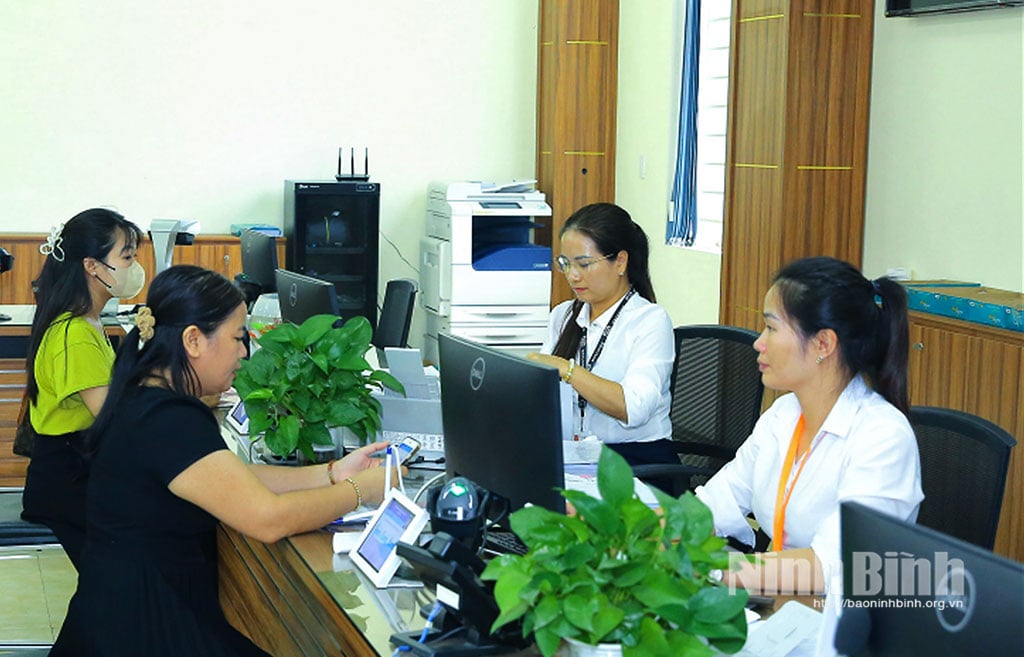
Current status and urgent requirements for information systems and databases
In recent years, Ninh Binh province has actively deployed and put into operation many important information systems (IS) and databases (DBs), effectively serving the management, operation and provision of public services. These systems are large-scale, highly important, and have become an indispensable foundation in the operations of agencies, units and localities.
For example, the provincial administrative procedure settlement system is currently being deployed in 150 units, with 3,276 user accounts, helping to provide online public services to people and businesses. By 2025, the system has provided 1,685/1,877 online public services, reaching 89.8%. Or the provincial document management and administration system, this is also a foundational system, the backbone of administrative activities and direction. Currently, the system has been deployed to 100% of state agencies at 3 levels (750 units), granted 12,500 user accounts and processed over 7 million circulated documents as of the first quarter of 2025.
In addition, the Online Conference System with 162 connecting points at 3 levels (province-district-commune) and the Central level has become an essential tool for remote direction and management, especially in the context of promoting digital transformation and developing science and technology.
In addition, the province also owns many other important information systems and databases such as: Provincial electronic information portal, provincial data connection, interconnection, integration and sharing platform (LGSP), Centralized authentication system (SSO), Data warehouse and open data portal, Intelligent Operation Center (IOC), Provincial reporting information system, Official email system, eCabinet system, One-stop monitoring system, and national and specialized databases (Population database, Land, cadres, civil servants, public employees...).
According to Mr. Bui Xuan Chien, Head of Digital Transformation Department, Department of Science and Technology, the top requirement when arranging administrative units and operating the 2-level government is to ensure absolute safety, smoothness and efficiency of key information systems. The highest priority is placed on the Document Management and Operation System, the Administrative Procedure Information System and the Online Conference System. These are the "backbone" systems, directly serving the direction and operation of the Party Committees and 2-level government and the transactions of people and businesses. Any disruption to these systems can cause serious impacts on the operations of the entire province.
In addition, ensuring the stability and continuity of other information systems and infrastructure is also extremely important. Network infrastructure (specialized data transmission, Internet, LAN) and other information systems and databases need to be maintained to operate stably and without interruption, ensuring high-speed and secure connections to all new commune-level administrative units.
Meeting the operational capacity of digital government also poses significant requirements. The infrastructure (Data center, transmission line) must have sufficient capacity to process, store and effectively operate shared IT systems and databases, while ensuring smooth and secure data sharing between the new provincial and communal levels. Changes in organizational structure also require reconfiguration of IT systems, databases (processes, authorization, processing flow, etc.) and administrative unit code elements; identification codes (agency codes, accounts, official letters, digital signatures, etc.) to accurately reflect the structure, functions and tasks of the new administrative units and the 2-level government model.
Another important requirement is to have a plan to backup, move and transfer electronic data fully and transparently between units, while maintaining the ability to look up and exploit data of the units before the merger. Finally, ensuring that people and businesses in the new administrative units can easily access and use online public services conveniently and effectively is also an indispensable goal.
Synchronous and drastic solutions
To meet the above urgent requirements, on April 28, 2025, the Provincial People's Committee issued Document No. 431/UBND-VP6, directing departments, branches, and People's Committees at all levels to focus on implementing synchronous and drastic solutions.
Accordingly, for departments, branches and sectors; People's Committees at all levels (especially newly established administrative units) shall preside over and coordinate with service providers and the Department of Science and Technology to urgently survey and comprehensively assess the current status of information systems and databases managed by the unit (including the old district level). On that basis, develop a detailed plan (technology, data, configuration, resources, funding, roadmap) to update and reorganize information systems/databases according to the instructions of the Department of Science and Technology and related regulations, to be completed before May 10, 2025.
Proactively review and develop a plan to propose changes/revocation/reissue of specialized digital signatures, official emails, and user accounts according to the new organizational structure and personnel, and send them to the Department of Science and Technology for synthesis and implementation of changes immediately after having a plan for arranging cadres, civil servants, and public employees. Strictly back up data before making changes. Organize the transfer of complete and transparent electronic data between units according to the instructions of the Department of Home Affairs and the Department of Science and Technology, ensuring the ability to look up and store, and complete after closing the system of the old unit.
Proactively review, evaluate and propose investment and upgrade of information technology infrastructure (LAN, computers, peripheral devices, etc.). Optimize LAN, upgrade dedicated data transmission lines (TSLCD), Internet for effective exploitation and safe connection to provincial systems. Assign focal staff to closely coordinate and implement approved plans, ensure completion of the reorganization of information systems/databases as soon as the 2-level government model comes into operation and report progress regularly. Organize training and guidance on the use of information systems after updating.
Faced with a huge workload and a tight deadline to complete tasks before July 1, the Department of Science and Technology, as the focal agency, is implementing a comprehensive campaign to ensure the stable and effective operation of shared IT systems. Mr. Bui Xuan Chien, Head of Digital Transformation Department, Department of Science and Technology, said: This is a big challenge, requiring a methodical and rigorous approach. Currently, our top priority is to survey, evaluate to adjust and reconfigure all core IT systems of the province (Administrative Procedures Resolution, Document Management and Operation, Official Letters, Centralized Authentication System (SSO) ...). Ensure the systems operate safely, smoothly and effectively, serving the organization and operation of the 2-level local government model, to be completed before May 15, 2025.
Along with that, the Department strengthens its coordinating role, closely coordinates with units in the province, and at the same time promotes the work of urging, inspecting and providing technical guidance. Another important task is to guide units on the process of data handover, account management and use of digital signatures. The Department also presides over the development and unification of the plan to update and use electronic identification codes and new document symbols after the arrangement on all relevant IT systems before completing the organizational arrangement. To ensure stable infrastructure operation, the Department is reviewing and reconfiguring connections via LGSP/NDXP. Close coordination with telecommunications enterprises is also emphasized, to ensure transmission quality and promptly resolve difficulties in infrastructure development.
With the close and drastic direction of the Provincial People's Committee and the synchronous participation of all levels and sectors, along with the close coordination of relevant enterprises and units, Ninh Binh province is demonstrating the highest determination in ensuring the smooth and continuous operation of the information "blood vessels" throughout the process of arranging, organizing and operating the two-level local government. This is an important premise for successfully implementing the goal of digital transformation, improving the efficiency of state management and the quality of service to people and businesses in the new development stage, at the same time, creating a strong driving force to promote the completion of the targets and tasks of Resolution No. 57-NQ/TW dated December 22, 2024 of the Politburo on breakthroughs in science, technology, innovation and national digital transformation in the province.
Source: https://baoninhbinh.org.vn/dam-bao-mach-mau-thong-tin-van-hanh-on-dinh-thong-suot-004836.htm



![[Photo] Prime Minister Pham Minh Chinh chairs conference on anti-smuggling, trade fraud, and counterfeit goods](https://vphoto.vietnam.vn/thumb/1200x675/vietnam/resource/IMAGE/2025/5/14/6cd67667e99e4248b7d4f587fd21e37c)




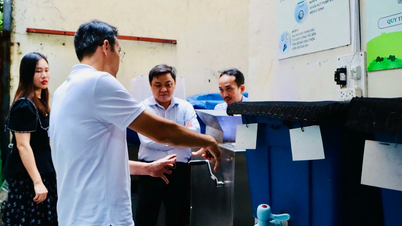


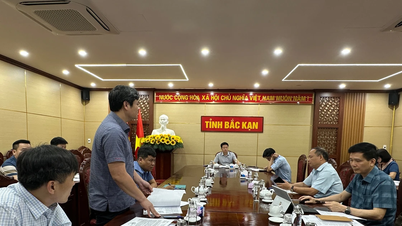








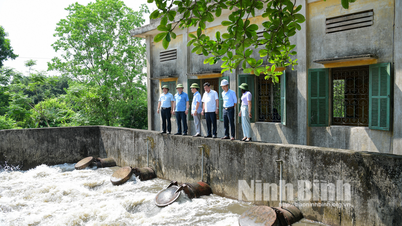

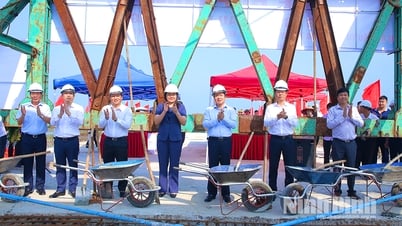


































































Comment (0)